
S’abonner pour poursuivre la lecture
Abonnez-vous pour avoir accès à la suite de cette publication et au contenu réservé aux abonnés.

Abonnez-vous pour avoir accès à la suite de cette publication et au contenu réservé aux abonnés.
English ORIGINAL Traducción al ESPAÑOL
Fin juin, début juillet 2021 Malérargues, Gard – Centre Roy Hart
Informations sur le Festival 2020 Historique du Festival depuis 1986 Les notes de bas de page seront développées plus avant et pendant le festival ainsi que d'autres articles préparatoires. S'inscrire à la Newsletter Pantheatre
Le sous-titre original anglais est A Performance Take littéralement, 'une prise performance' : la superstition prise et comprise à travers la performance.
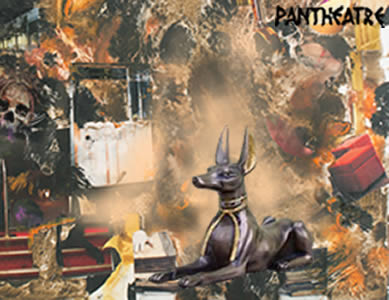
Anubis, extrait de l’image affiche du festival
Sur l’image d’entête du festival, le capharnaüm et le bric-à-brac de la superstition sont sous la garde d’Anubis, le dieu-chacal égyptien, gardien du passage à la mort : une présence divinement alerte. Nous en ferons le dieu de la superstition pour les besoins de notre approche : performance comprise.
VOIR IMAGE COMPLÈTE
La superstition a été dédaignée et mise au ban par la pensée occidentale « sérieuse », et ce, depuis quelques siècles[1], un exil qui est mis en question par les ethnographes et les artistes contemporains, qui voient dans cet anathème un filtre colonial de plus à ôter de nos convictions anthropologiques et de nos croyances religieuses. Lire la suite
Traduction française pdf
Cri, Plomb, Effondrement (en espagnol "desplomo" est l'opposé d'aplomb)
La insurrección en Chile contra el gobierno de Sebastián Piñera a sorprendido a muchos por su fuerza, tenacidad y amplitud. Annie Murath, amiguísima chilena y presidenta de Pantheatre Chile, la describió, en una carta reciente (25/10/2019) a sus amigos, como teniendo la “fuerza de un volcán”.
Tardé en contestarle; tuve que “incubar” mi respuesta; y fue algo así como tener fiebre en los huesos. Lire la suite
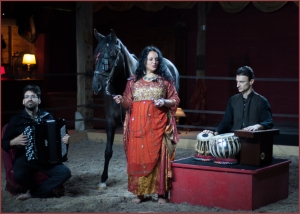
Photo archive – Ruth Bennaroch
J’appelle Ruth Bennaroch La Reine Séfarade, et j’ai beaucoup de compliments à lui faire au niveau de ‘l’estampe’. Être une reine séfarade en est déjà un, et de taille ! Une magnifique estampe. Une estampe, techniquement, c’est une impression à partir d’une gravure prototype : un transfert sur papier d’une image gravée sur cuivre – ou sur d’autres supports, comme la lithographie, sur pierre (une forme moins pointue et acide – plus estompée, justement). Par extension, une estampe est aussi une image, prise au sens large d’une figure-type, typée souvent jusqu’à l’allégorie, et généralement à la fine allure – ou riche et fleurie, comme c’est le cas avec Ruth Benarroch. L’art européen de la fin du 19e a connu un engouement particulier pour les images estampes (les Préraphaélites en Angleterre, les Néo-Classiques en France, appelés méchamment Pompiers…) Ruth Benarroch est une estampe incarnée : une reine, et non plus une princesse. Matisse l’aurait prise comme modèle d’odalisque – et Picasso l’aurait suivi de près.

Matisse Odalisque

Photo Didier Monge
de et par Hélène Larrodé
mise en scène de Linda Wise
Représentation donnée le 9 août 2019, au Centre Roy Hart (Gard)
Mon père avait un avocat, non pas véreux, mais venimeux. Et laid. On l’appelait le singe électrique (el mono eléctrico) tant il avait de tics (à la Sarkozy). Par contre, il était toujours impeccablement surhabillé, surparfumé et surgominé. Je pense qu’il était amoureux de ma mère et qu’elle l’avait envoyé promener. C’est une histoire à la Othello (à la Iago, surtout) mais post-mortem, car mon père est mort à quarante-six ans d’une terrible cirrhose – après vingt ans de whisky ! L’avocat s’est débrouillé pour lui faire signer un divorce peu avant sa mort, en plein coma, laissant ma mère sans héritage ni soutien financier. Cet avocat gérait aussi une autre obsession de mon père, (qu’il repose en paix : il est parti trop tôt pour que puisse être son ami…). Son autre obsession, c’était l’évasion fiscale. Les sociétés off-shore (Panama déjà). Ma sœur et moi n’étions pas dupes et traînions les pieds pour aller signer les papiers de l’héritage après sa mort. L’avocat a vite compris pourquoi, bien sûr : ce divorce. Sans un mot, il a fait déposer un énorme tas de cartons devant l’appartement de ma sœur, bloquant le palier, avec tous les dossiers. (Voir le post scriptum, pour une réflexion sur ce prélude.)
J’ai eu aussi un peu l’impression d’avoir déchargé plein de cartons chez Linda Wise, en discutant avec elle sur Le Rêve d’une Danse. Des cartons contenant des dossiers sur la performance donnée la veille à Malérargues. C’était la quatrième version que je voyais.
Et APERITIF pour le Festival Mythe et Théâtre : 18 juin 2019. ENGLISH : Towards an operative and speculative LEXICON (below) ESPAÑOL : Hacia un LEXICON operativo y especulativo (traducción muy pronto) Voir aussi L'EDITORIAL et INFORMATION sur le FESTIVAL (inscriptions ou participation partielle possibles) Nous contacter texto +33 7 70 55 22 56 ou email
Les mots du lexique sont en rouge (ou bleu, si avec liens).
Proposition de construire un lexique autour de LUCK, un lexique à la fois opératif, qui accompagne le travail expérimental en laboratoire, et spéculatif, pour que les termes, leurs définitions et origines deviennent des catalyseurs créatifs. Un lexique, un glossaire, voire parfois un mode d’emploi ou même (peut-être surtout) un grimoire. Je compare d’ailleurs souvent les laboratoires (un terme qui nous vient de l’alchimie) à des séances de spiritisme : le théâtre comme travail de présence, oui, mais surtout de « présence d’esprits », au pluriel. Par ailleurs, une fausse étymologie est souvent bien plus créative qu’une ‘vraie’, qui peut boucher les horizons par manque d’ouverture d’esprit. Les étymologies douteuses font partie, d’ailleurs, des fonctionnements de LUCK, comme la découverte de la pénicilline par Alexandre Fleming en 1928 : un coup de LUCK bien suivi. Nous y reviendrons avec la notion de sérendipité mais surtout, à présent, de méchanceté : que préférez-vous, une mauvaise bonne fortune, ou une bonne mauvaise fortune ? Lire la suite
Traduction française en cours
English translation soon
Pogüerful es una obra concebida y escrita por Bibiana Monje,
adaptación dramatúrgica y puesta en escena con Enrique Pardo.
Se presentaron dos pre-estrenos en Las Palmas de Gran Canarias
el 12 y 13 de abril de 2019 donde se vislumbró por primeara vez a
La Espírita Santa.
Es la segunda colaboración entre ellos – la segunda folie à deux :
locura a dos. La primera se titulaba LACURA.
Pogüerful : https://www.bibianamonje.com/pogueerful
Artículo sobre LACURA, Emotional Pornography (en inglés)
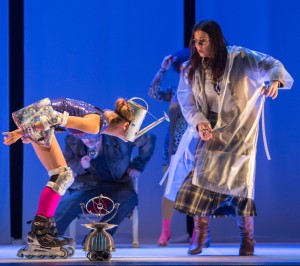
Hay, en Pogüerful, una figura que llamamos La Polaca, actuada por Lucía Camo, y que viene a ser La Espírita Santa de la obra. Guapa, rubia, flaca, alta (sobre todo con los patines puestos), con pinta sexy de guaripolera, de tipo dominatrix implacable, y que lleva como máscara una regadera de aluminio que le da aires de angel-rinócero diabólico. Una guaripolera es a una chica bonita que lidera los desfiles pseudo-militares de chicas bonitas, haciendo malabares con un bastón de guerra: el warpole – de ahí, guaripola, la bastonera.

Lucia CAMO La Espírita Santa

Guaripoleras
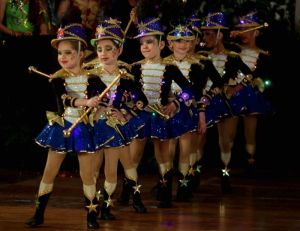
Séminaire originellement intitulé Nietzsche et la Franc Maçonnerie Autour du livre Philosophie de l'Initiation de Bruno Pinchard avec l'inclusion du livre de Peter Kingsley Catafalque : Carl Jung and the End of Humanity. RENSEIGNEMENTS et INSCRIPTION
Originellement, ce séminaire en deux séances allait être dédié au livre de Bruno Pinchard, Philosophie de L’Initiation, dont j’avais fait le Livre de l’Année 2018, mais sans avoir pu en partager les raisons jusqu’ici. Vous trouverez ci-dessous la présentation originelle du séminaire, puis ensuite sa mise à jour avec l’inclusion de l’impact du livre de Peter Kingsley : Catafalque : Carl Jung and the End of Humanity.
 Le livre de Bruno Pinchard, d’abord. Je compte l’aborder à travers le thème: Nietzsche et la Franc-Maçonnerie, et je nous invite à étudier particulièrement le chapitre intitulé Ainsi parlait Zarathoustra / aux francs-maçons. Télécharger copie PDF
Le livre de Bruno Pinchard, d’abord. Je compte l’aborder à travers le thème: Nietzsche et la Franc-Maçonnerie, et je nous invite à étudier particulièrement le chapitre intitulé Ainsi parlait Zarathoustra / aux francs-maçons. Télécharger copie PDF
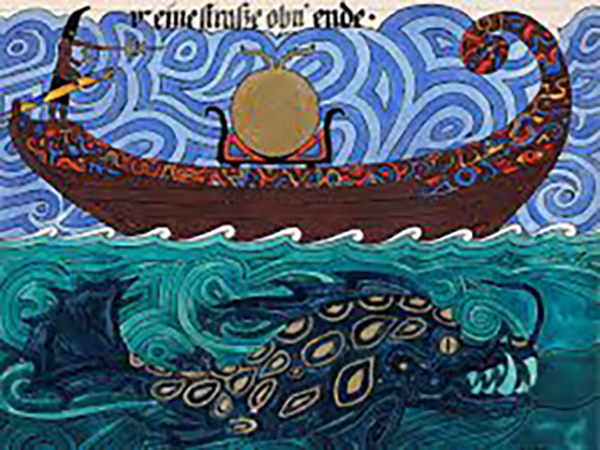
Le Libre Rouge, Nautis, dessin de C.G.Jung
Carl Gustav Jung (1875 – 1961) est mentionné en premier dans le titre de cet article, par respect. Faulkner (1897 – 1962, un peu plus jeune), en dernier ; mais il serait « le premier grand romancier de l’inconscient ». Peter Kingsley, entre les deux : il vient de publier un nouveau livre (en deux volumes) intitulé : Catafalque : Carl Jung and the End of Humanity (Catafalque : Carl Jung et la Fin de l’Humanité). Les titres des livres de Kingsley sont en général de belles provocations, comme l’est aussi le ton qu’il adopte souvent dans ses écrits. Les universitaires peuvent être mesquins et compétitifs dans leurs critiques, mais qu’est-ce que Kingsley leur facilite la tâche ! D’un point de vue artistique, le mien, en marge des obligations académiques, mais allant souvent piller les travaux des universitaires, les provocations de Kingsley sont des appels d’air frais. Après tout, provoquer, c’est, étymologiquement pro voce : faire ressortir des voix, susciter l’inspiration, la pensée. Le respect dû à Jung est une autre affaire, que je dépose comme une gerbe de fleurs sur le pont-levis de sa tour médiévale à Bollingen, au bord du lac de Zurich. (Le pont-levis est une figure de l’esprit, bien sûr.) Lire la suite
Mentions : Richard Maxwell, Sean Lewis, Pirandello, Linda Wise, Bibiana Monje.
 The Theatre of Sexuality is a title I have often used in the last years, covering a topic I consider fundamental: how theatre can comment on what we humans have done with sexuality and with the mechanisms of reproduction. I am currently studying Richard O. Prum’s book, The Evolution of Beauty: How Darwin’s Forgotten Theory of Mate Choice Shapes the Animal World – and Us. It relativizes, at long last, the neo-darwinian iron-hold on so-called natural selection, Darwin’s first theory of evolution. I hope soon to write a review of the book from the point of view of The Theatre of Sexuality (and LUCK). Lire la suite
The Theatre of Sexuality is a title I have often used in the last years, covering a topic I consider fundamental: how theatre can comment on what we humans have done with sexuality and with the mechanisms of reproduction. I am currently studying Richard O. Prum’s book, The Evolution of Beauty: How Darwin’s Forgotten Theory of Mate Choice Shapes the Animal World – and Us. It relativizes, at long last, the neo-darwinian iron-hold on so-called natural selection, Darwin’s first theory of evolution. I hope soon to write a review of the book from the point of view of The Theatre of Sexuality (and LUCK). Lire la suite
Spectacle crée le 27 juillet 2018 à Malérargues, Centre Roy Hart, Gard. Création, Interprétation : Yane Mareine Mise en scène : Daniela García Dramaturgie : Yane Mareine et Daniela García Arrangements musicaux et piano : Saso Vollmaier Percussions : Christiane Cobral Cet article est une critique contextualisée : elle fait référence à Yane Mareine que j’ai rencontré dans un contexte polémique: la formation de professeurs Roy Hart. Et à Daniela García, connue auparavant sous le nom de Daniela Molina, proche collaboratrice que j’ai eu le plaisir de diriger dans trois spectacles écrits par elle: L'Autri-chienne, Animitas, et La Boîte Noire. Site Web
Qui est la plus belle ? La plus belle appartient à Yane Mareine : sienne est, sans conteste pour moi, la plus belle voix que j’aie entendue à la Magnanerie, la salle de spectacles du Centre Roy Hart dans le Sud de la France. Et le lieu en impose : c’est en quelque sorte l’un des grands temples internationaux de la voix. J’y ai entendu des centaines de voix, et, qui plus est, ma compagne et collaboratrice, Linda Wise, a fait sa spécialité de l’Art de l’Interprétation : les concerts avec ses collaborateurs et élèves sont du plus haut niveau de performance vocale, « chantée ». Il va falloir, bien sûr, « s’entendre » (comme l’on dit si bien en français), sur ce que j’entends par « belle voix », et p ourquoi celle de Yane Mareine, dans ce spectacle du 27 juillet 2018, était la plus belle. Cet article est un essai critique sur cette voix et sur sa mise en scène . Note : c’est la marâtre de Blanche Neige qui pose la question à son miroir magique : « … dis-moi : qui est la plus belle ? »
ourquoi celle de Yane Mareine, dans ce spectacle du 27 juillet 2018, était la plus belle. Cet article est un essai critique sur cette voix et sur sa mise en scène . Note : c’est la marâtre de Blanche Neige qui pose la question à son miroir magique : « … dis-moi : qui est la plus belle ? »
La Beauté a un statut ambivalent dans l’héritage de Roy Hart (décédé en 1975, il faut le rappeler). Lire la suite
Footnotes and links will be added soon Traduction Française Traducción al Español
This article shares a series of reflections on my stand and outlook today in relationship to performance and theatre. It is offered as preparatory notes, to Amy Rome, professor at University of Central Lancashire (UCLan) and organizer of the coming Symposium titled Transdisciplinary Explorations into Performativity, as well as to Jane Turner, Principal Lecturer of Contemporary Arts at Manchester Metropolitan University, and guest lecturer at the Symposium. The Symposium follows my being awarded an Honorary Fellowship by the University of Central Lancashire.
UCLan SYMPOSIUM July 17 to 20, 2018 The Media Factory University of Central Lancashire. Preston UK PRESENTATION & REGISTRATION
Pantheatre’s Myth and Theatre Festival June 19 to July 1st, 2018 Roy Hart Centre, Southern France PRESENTATION & REGISTRATION
Traduction française bientôt
This article addresses the finances of the Myth and Theatre. The theme for 2018 is Nekyia, the descent to the pagan hell, the kingdom of the dead, whose lord is Hades, known to the Romans by his other Greek name: Πλούτων, Pluto, which makes him a millionaire. Πλούτων, Plouton, means wealth. Let us keep that as our underworldly backdrop.
Lire la suite
Voir traduction française PDF
On April 20, 2018, I received a proposal from Nate Speare titled “Pantheatre Legacy Dissemination Project Proposal”. A proposal actually made to Amy Rome, PhD, lecturer at University of Central Lancashire (UCLAN). Both are friends. Here is a brief presentation and response: Lire la suite
Hamlet’s Grimoire (Book of Magic Spells) English translation in the making A l’occasion de Hamlet Unlimited, de Yves-Noël Genod, créé le 13 mars 2018 au Théâtre de Vanves dans le cadre du Festival Artdanthé. Article incluant des rèflexions sur le Hamlet de Romeo Castellucci, et Hamlet House, de Sean Lewis Article publié aussi sur le site Ars Magica - Magie et Sciences Humaines
« On apprend ainsi que grammaire, glamour, grimoire et graffiti sont des greffons de greffe. » Source
Hamlet. Nous sommes dans les brumes hivernales de la côte danoise : la Mer du Nord par une nuit de froid glacial, avec, dans l’air, des rumeurs d’un possible débarquement ennemi, venu de Norvège. Il doit être entre trois et quatre heures du matin, et il est normal que les vigies s’assoupissent sur les redoutes du château fort. J’ai noté que mon voisin succombait. Moi aussi. On était trop bien assis dans la nuit de ce grand hangar noir, plutôt délabré, et très faiblement éclairé : juste une rangée de néons glauques, un minimum sécuritaire. Une dizaine de tables de type gymnase ou de réfectoire d’école, blanches et moches pour tout décor. Et l’inévitable machine à fumée, discrète et ici, juste. Puis des fantômes commencent à apparaître, et notamment le fantôme du père de Hamlet. Il déambule, paumé, sans rien dire. Aucun effet dramatique pour ce grand, énorme drame baroque de Shakespeare[1]. Lire la suite
Following the publication of the article titled Towards a Docta Memoria of Roy Hart [1], a philosopher colleague involved with the Roy Hart Centre, sent me some comments concerning especially the relationship between Roy Hart (1926 – 1975) whom he did not meet, and Roy Hart’s teacher, Alfred Wolfsohn (1896 – 1962) whose writings he is very familiar with, in the original German. I told him that an exchange like ours could already constitute a “doctoral” agenda.
This article has two parts. One that is ‘internal politics’ and a second one that is philosophical. At this juncture, especially, I cannot separate the two, and it is essential for me to state my position on Malerargues, the property, in the South of France, where the Roy Hart Centre is based, as well as on the use that is made of Roy Hart’s name[2].
Translated from the French Voir l'original en Français
No doctorate has been written on Roy Hart. This is a surprising lacuna that contains or has taken on the appearance of an aporia, that is to say a void or avoidance, possibly a moral obstacle or a form of tacit interdict linked with his violent death in a car crash, including his two closest loved ones. On several occasions, I have tried to encourage students to take on such a doctoral undertaking, which I would say is all the more interesting because of the inherent difficulty and resistance. I have suggested different approaches to persons who could engage in such cultural reflections, and I am even prepared to lend a hand. It is true that time passes and that most of the academic and cultural references belong to another era, namely to 1968 and the 1970s – but the distance can be actually an advantage for such reflections.
I am referring specifically to Roy Hart (1926 – 1975) and to his ideas.
"Towards a Docta Memoria of Roy Hart"
See English translation
Il n’y pas de doctorat écrit sur Roy Hart. C’est une lacune qui contient ou qui a pris des allures d’aporie, peut-être même une forme de tabou traumatique suite à son décès violent dans un accident de voiture avec ses deux compagnes intimes. A plusieurs reprises j’ai encouragé des étudiants à confronter une telle tâche, qui selon moi est d’autant plus intéressante qu’il y a cette résistance voire ce non-dit inhérent. J’ai fait des suggestions de différentes approches à des personnes susceptibles d’entamer une réflexion culturelle en profondeur; j’ai même été prêt à donner un coup de main. Il est vrai aussi que le temps passe et que les références universitaires et culturelles appartiennent à une autre époque, notamment à 1968 et aux années 1970. Mais d’un autre côté la distance et la mise à distance peut être favorable à une telle refléxion.
Je me réfère ici spécifiquement à la personne de Roy Hart (1926 – 1975) et à ses idées.
Voir aussi la note dans mon nouveau MINI-BLOG au sujet de la tribune de Paul B. Preciado dans le journal Libération du 15/02/2018 , intitulée Lettre d’un homme trans à l’ancien régime sexuel.
Des images seront ajoutées bientôt.
English translation in the making…
Cet article fait suite à celui intitulé Kaya, Karma, Khoros, Krishna dédié à Kaya Anderson publié en anglais [1]. J’y parlais de ma propre résistance, étudiant de Beaux-Arts à la fin des années 1960 à Londres, envers tout ce qui était indien. Après avoir lu l’article où je décris la qualité « gourou » de Kaya, elle m’a très cordialement posé une question point blank (à brûle-pourpoint) : est-ce que je me considère aussi comme un gourou, ou un enseignant de type gourou. C’est direct, pertinent et un juste retour des choses, vu que, encore aujourd’hui en Occident, ce n’est pas nécessairement un compliment. Mstislav Rostropovitch, lorsqu’on l’adoubait du titre de « maître », répondait très vite : « centimètre ». Lors de la conversation avec Kaya deux autres questions ont surgi sur le thème de l’enseignement ; d’abord celle de l’inclusion des rêves et d’éventuels retours interprétatifs dans l’enseignement vocal/théâtral. Ensuite et par corollaire : pourquoi je ne donne pas de « leçons de chant » [2] en individuel, dans un rapport de un à un ? Dessous, des réponses. Lire la suite
Images still to be included.
The title of this article may sound like an Indian mantra, but it isn’t quite: Kaya refers to Kaya Anderson to whom this article is dedicated, and Khoros is Greek: chorus. But I will owe up and this article should make clear why such references. I start with a confession: as a student I used to be rather mean and distrustful with all things Indian . Maybe it was a reaction to the fact that at the time I lived and studied in the very hub of London’s hippie Indian craze of the mid 1960s: Chelsea School of Art was right next door to the Antique Market on the King’s Road: incense, marihuana and sitars. I particularly distrusted Indian alternative philosophical attitudes and the forms of teaching associated with them. Not that I knew that much about the Vedas, yoga or Buddhism: I was prey to a common, arrogant bug amongst Western artists and thinkers, one that was (and still is, though less) particularly prejudiced and aggressive against two fundamental Indian notions: karma and guru. Predictably enough, poetic justice turned the tables on me: I met Roy Hart and started following him. Roy Hart was certainly not Indian but he knew well how close his model of teaching was to that of a guru, and what the meaning of working on karma implied[1]. Lire la suite
The Metaphysical Voice & The Boots of Innocence
 Nate Speare – a Brooklyn-based actor, director, playwright and astrologer, with serious knowledge of James Hillman’s work and ideas – sends news that “his Reagan is being revived per invitation of Dixon Place, lower east side in Manhattan, on November 4th (2017)”. I directed the piece some years ago as part of a training and study residence Nate did with Pantheatre. He took over the Pantheatre library and worked on a great archival catalogue. He also wore, performing Reagan, a pair of old black cowboy boots I lent him for the occasion. The piece contains docu-fictional revelations on Reagan’s Alzheimer’s fantasies – and on the fact that Nate when a kid was a fan of Ronald Reagan, if only to annoy, be contrary and imp-pertinent with his liberal East-Coast father. Nate is revising his Reagan to integrate the new presidential delirium: a ‘trumped up’ version of a tragic-comically ‘trumped-down’ piece: Reagan’s Alzheimer’s was actually, and in spite of being very funny, a terrible descent into hell.
Nate Speare – a Brooklyn-based actor, director, playwright and astrologer, with serious knowledge of James Hillman’s work and ideas – sends news that “his Reagan is being revived per invitation of Dixon Place, lower east side in Manhattan, on November 4th (2017)”. I directed the piece some years ago as part of a training and study residence Nate did with Pantheatre. He took over the Pantheatre library and worked on a great archival catalogue. He also wore, performing Reagan, a pair of old black cowboy boots I lent him for the occasion. The piece contains docu-fictional revelations on Reagan’s Alzheimer’s fantasies – and on the fact that Nate when a kid was a fan of Ronald Reagan, if only to annoy, be contrary and imp-pertinent with his liberal East-Coast father. Nate is revising his Reagan to integrate the new presidential delirium: a ‘trumped up’ version of a tragic-comically ‘trumped-down’ piece: Reagan’s Alzheimer’s was actually, and in spite of being very funny, a terrible descent into hell.
Probably at exactly the same time when Nate sent me his email, I was directing an actor and theatre teacher in our Paris professional laboratory. We were going to tackle his working text for the first time. I asked him to lie down on his back, close in front of the audience and, before starting, to sigh deeply and calmly, for quite a while, relaxed and relieved. I had no idea what text he had chosen.
The following paragraphs comment and analyze a directorial session, weaving in psychological and philosophical threads. The integration of text into both choreographic theatre and voice performance is the “cherry on the cake” of my work, the core and cutting-edge of what I actually mean by voice work. It is also where I have taken, amongst other sources, Roy Hart’s voice philosophy, and it is in line with a post-modern (Derrida-like) definition I particularly like, by Italian philosopher Giorgio Agamben: “Listening to the voice in speech is what thinking is all about”.
Réflexions critiques à propos d’une performance de Waltrud Höfinger,
intitulée: Not a Song (Non pas une Chanson) –
une performance personnelle, poétique et musicale sur la voix,
présentée à Malérargues, Centre Roy Hart, en août 2017.
Le titre de cet article est inspiré d’un livre de l’écrivain brésilienne Clarice Lispector, intitulé Near to the Wild Heart (1943), Près du Cœur Sauvage. Linda Wise, compagne, metteur en scène, actrice et professeur, l’étudie pour un projet de spectacle. Elle l’a décrit comme «le livre le plus sauvagement introverti qu’elle ait jamais rencontré».
Nota : le mot « sauvage » en français peut se traduire en anglais par deux mots : savage qui est trop « sauvage » justement, voire cruel, brutal, sans-manières, et par wild (le mot dans l’original anglais), qui est moins agressif et se réfère à un état de nature sauvage, non civilisée, non domestiquée – libre, en ce sens.
Comments and reflections after a performance by Waltrud Höfinger titled: Not a Song, A personal, poetical, musical performance about voice, performed at Malérargues, Roy Hart Centre, August 2017.
The title of the article is inspired by a book by Brazilian writer Clarice Lispector, titled Near to the Wild Heart (1943). Linda Wise, companion, theatre director, actress and teacher, who is studying it for a possible performance project, described it as “the most wildly introverted book she had ever come across”.
See English original Des commentaires sur l'article seront traduits et présentés en français. Ils sont lisibles dans la version anglaise.
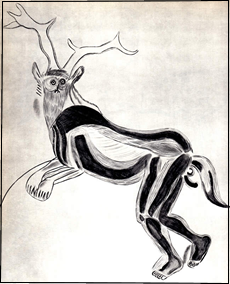
Figure connue comme le Sorcier de Trois-Trères.
Note de traduction. Le titre de cet article part sur un jeu de mots anglais, mordant, voire risqué: l’inversion teacher / cheater. Cheater, c’est tricheur (fraudeur, trompeur, escroc…) En français l’on pourrait jouer sur mentor/menteur, mais cela n’a pas l’étincelle du tricheur/trickster (qui invoque Hermès l’Arnaqueur Divin). Plus complexe et scandaleux – et très au goût du jour – est le duo chaman/charlatan. Lors d’un vif échange avec Charles Boer, l’un de mes professeurs de mythologie, il m’a écrit : « Shaman you ! » (Shame on you, honte à toi!) Il refusait le titre de Sorcier (ou de Chaman) à la fameuse figure de la Grotte de Trois-Frères. C’était le temps de la lutte militante du théâtre contre le chamanisme. On n’en est plus là – et ce que représente (performe) le chamanisme me semble fondamental, et surtout depuis les livres de Peter Kingsley.
Remerciements à Véronique Taconet et Pierre Jeammes pour avoir affiné cette traduction.
1 – PROJETS / STRUCTURES & DIPLOMES
2 – DIRECTEURS ET DIRECTIVES
3 – MENTOR
4 – ART & THÉRAPIE
5 – POURQUOI ROY HART?
6 – CONSULTATIONS CASUISTIQUES
Expanded from a lecture delivered in Torino:
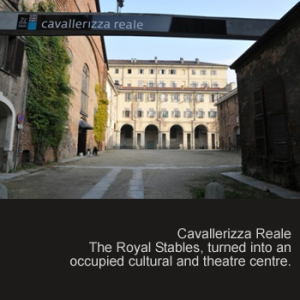 14 luglio 2017 – Cavallerizza – Torino. Lecture by Enrique Pardo: on the occasion of a visit to the Museo Egizio, the director proposes a meditation on the invention of religions in Egitto, mother of all fictions. Special gratitude to the Cavallerizza I-REALE occupata for its hospitality.
14 luglio 2017 – Cavallerizza – Torino. Lecture by Enrique Pardo: on the occasion of a visit to the Museo Egizio, the director proposes a meditation on the invention of religions in Egitto, mother of all fictions. Special gratitude to the Cavallerizza I-REALE occupata for its hospitality.

Museo Egizio Entrance
The town of Torino has the surprising reputation of being one of the Europe’s capitals of magic. This is due especially to its Egyptian Museum, product of the fascination with Egypt in the 19th century after Napoleon’s expeditions, which were Masonic-driven enterprises to a large extent, seeking for the source and prestige of Egyptian esoteric magic. Bernardino Drovetti, a highly colorful and animoso (fiery) character joined Napoleon’s Egyptian party, to then remain in place as French proconsul and thus obtain all the permits needed to organize archeological digs, send them back to
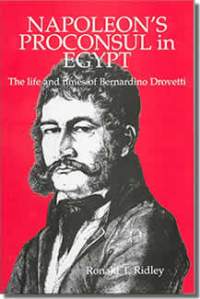
Sr Drovetti
Italy (he was from Torino…) – or sell them all over Europe. Later, in the 1890s, Sr. Ernesto Schiaparelli an archeologist of high repute, senator to the monarchy, expanded the Torino museum with his own extraordinary discoveries (he found Nefertiti!): he was particularly lucky to stumble upon the village of the artisans who built the palaces and temples of the Valley of Kings, and Queens. These sites were intact, preserved under desert sand. The atmosphere in Turin when the cases arrived and were opened was, well, “magic”.
Here are some reflections on the occasion of the visit to the Museo delle Antichità Egizie di Torino, organized by Piccola Compagnia della Magnolia who invited Linda Wise and me to direct a professional theatre course as part of their project Alta Formazzione MAESTRALE 2017. First class hosts and first class participants (the organizers’ choice.) Our project addressed Divinatory Theatre – and more precisely Il genio dramaturgico oracolare (The genius of oracular dramaturgy). I am a great believer, especially in laboratory contexts, in the maxim that says: “If you write “devil” on the wall, the devil will appear”. We wrote “Egypt”.
Voir traduction française.
5 sections
1 – BLUEPRINTS & DIPLOMAS
2 – DIRECTORS & DIRECTIONS
3 – MENTOR
4 – ART & THERAPY
5 – WHY ROY HART ?
6 – CASUISTIC CONSULTATIONS
see comments & echanges with Steven Levine and Sean Lewis, below.
Teachers, Cheaters, Gurus and Mentors: Roy Hart was all of these, and more, like most great guiding figures. Each of these designations has its own mindscape and values; how to differentiate them? How to gage the balance and interplay of their inherent blueprints and moods – their evolution in time and the influence of other models, current or historic – sometimes unacknowledged, sometimes unknown? And how to do this in Roy Hart’s case, more than forty years after his passing? The following are “post-Roy Hart” reflections written as part of a process of reviewing and revisioning the transmission of Roy Hart’s legacy, especially by the persons now actively linked to the Roy Hart International Artistic Centre. The place is important since the process is, precisely, taking place in Malerargues, a property and a château purchased in 1974, only months before Roy Hart’s passing[1], a place – real estate – which to a large extent kept the group that followed him together, at least for some time, for better and for worse – and which today includes mostly persons who never met Roy Hart. Lire la suite

An original Hammond Organ. See footnote 1.
Hammond Organ [1] was the title of a concert on July 26, 2017, given at Lasalle, in the South of France, the neighboring village near Chateau de Malerargues. The concert was organized by the United Protestant Church of the Val de Salindrenque.
We are in Protestant country and the village of Lasalle (barely over 1000 inhabitants – in Winter!) must have over ten Protestant temples lined up along its single two-miles long street, all of different confessions. The subtitle of the concert says: From the psalms to Negro-spirituals and to XXth century Gospel, with the Hammond organ and organ player JP Delrieu. 1517 – 2017 : 500 YEARS of influences in the evolution of music in the world [2]. PRESENTATION.
James Hillman once said to me: “It is important to be Protestant once a week”. He was Jewish, and I was (am?) Catholic (we are talking culture here, not religion.) If there is one title that James Hillman absolutely deserved, certainly in our times, it is that of being “The King of Soul” (yes, up there with Salomon Burke and his own Hammond). In fact in an editorial of an issue of Hillman’s Spring – A Journal of Archetype and Culture, the then acting editor, Charles Boer, at his imp-pertinent best, wrote that James Hillman should have the copyright on the word soul[3]! He was addressing, obviously, white American high culture and psychotherapeutic circles[4], because by then the word SOUL had taken over black American and world popular culture. It was African-Americans who brought back the word SOUL, causing the revolution we all know, in music, in singing – and in musical theology: notice the close call between singing and sinning! Popular soul was black.
At the very same time and in a completely different context, Roy Hart was quoting the 19th century American romantic poet Henry Longfellow: “The voice is the muscle of the soul”.
Now for some reflections on the chain of synchronicities leading to and spinning off from these seemingly disparate cultural landmarks.